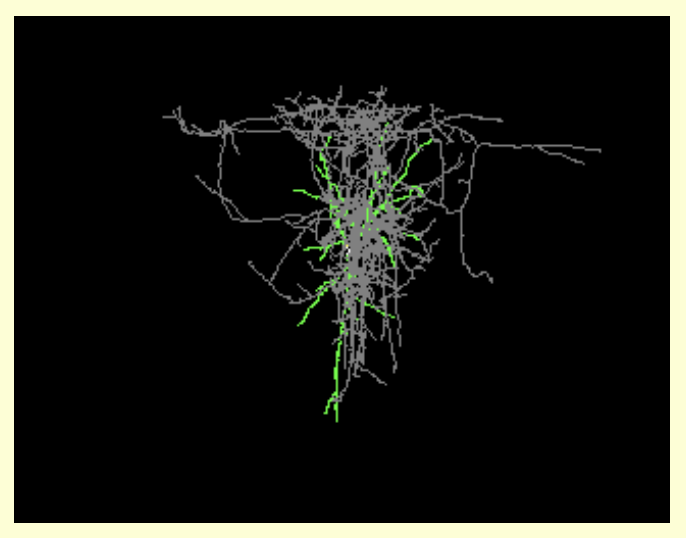Direct interrogation of context-dependent GPCR activity with a universal biosensor platform.
G protein-coupled receptors (GPCRs) are the largest family of druggable proteins encoded in the human genome, but progress in understanding and targeting them is hindered by the lack of tools to reliably measure their nuanced behavior in physiologically relevant contexts. Here, we developed a collection of compact ONE vector G-protein Optical (ONE-GO) biosensor constructs as a scalable platform that can be conveniently deployed to measure G-protein activation by virtually any GPCR with high fidelity even when expressed endogenously in primary cells. By characterizing dozens of GPCRs across many cell types like primary cardiovascular cells or neurons, we revealed insights into the molecular basis for G-protein coupling selectivity of GPCRs, pharmacogenomic profiles of anti-psychotics on naturally occurring GPCR variants, and G-protein subtype signaling bias by endogenous GPCRs depending on cell type or upon inducing disease-like states. In summary, this open-source platform makes the direct interrogation of context-dependent GPCR activity broadly accessible.
Pubmed ID: 38412860 RIS Download
Research resources used in this publication
Additional research tools detected in this publication
None foundAntibodies used in this publication
- Goat anti-Rabbit IgG (H+L) Secondary Antibody, DyLight 800 conjugate (RRID:AB_614947)
- IRDye 800CW Goat anti-Mouse IgG (RRID:AB_621842)
- Goat anti-Mouse IgG (H+L) Highly Cross-Adsorbed Secondary Antibody, Alexa Fluor™ 680 (RRID:AB_2535724)
- F(ab')2-Goat anti-Rabbit IgG (H+L) Cross-Adsorbed Secondary Antibody, Alexa Fluor™ 680 (RRID:AB_2535737)
- p44/42 MAPK (Erk1/2) (137F5) Rabbit mAb (RRID:AB_390779)
- Phospho-p44/42 MAPK (Erk1/2) (Thr202/Tyr204) (D13.14.4E) XP® Rabbit mAb (RRID:AB_2315112)
- RFP Monoclonal Antibody (RF5R) (RRID:AB_10999796)
- Galpha s/olf (C-18) (RRID:AB_631539)
- Rabbit Anti-Gi alpha 3 Polyclonal antibody, Unconjugated (RRID:AB_310085)
- Anti-PAR-1, clone ATAP2 Antibody (RRID:AB_2935797)
- Gbeta (H-1) (RRID:AB_2109632)
- Monoclonal Anti-alpha-Tubulin antibody produced in mouse (RRID:AB_477582)
- Mouse Anti-polyHistidine Monoclonal Antibody, Unconjugated, Clone HIS-1 (RRID:AB_260015)
- Monoclonal ANTI-FLAG® M2 antibody produced in mouse (RRID:AB_262044)
- Living Colors? A.v. Monoclonal Antibody (JL-8) (RRID:AB_10013427)
- Beta-Actin Rabbit Monoclonal Antibody (RRID:AB_1850027)
Associated grants
- Agency: NINDS NIH HHS, United States
Id: F31 NS115318 - Agency: NIGMS NIH HHS, United States
Id: R01 GM136132 - Agency: NIGMS NIH HHS, United States
Id: R01 GM147931 - Agency: NINDS NIH HHS, United States
Id: R01 NS117101
Publication data is provided by the National Library of Medicine ® and PubMed ®. Data is retrieved from PubMed ® on a weekly schedule. For terms and conditions see the National Library of Medicine Terms and Conditions.
This is a list of tools and resources that we have found mentioned in this publication.
Goat anti-Rabbit IgG (H+L) Secondary Antibody, DyLight 800 conjugate (antibody)
RRID:AB_614947
This polyclonal targets Rabbit IgG (H+L)
View all literature mentionsIRDye 800CW Goat anti-Mouse IgG (antibody)
RRID:AB_621842
This unknown targets IgG
View all literature mentionsGoat anti-Mouse IgG (H+L) Highly Cross-Adsorbed Secondary Antibody, Alexa Fluor™ 680 (antibody)
RRID:AB_2535724
This polyclonal secondary targets IgG (H+L)
View all literature mentionsF(ab')2-Goat anti-Rabbit IgG (H+L) Cross-Adsorbed Secondary Antibody, Alexa Fluor™ 680 (antibody)
RRID:AB_2535737
This polyclonal secondary targets IgG (H+L)
View all literature mentionsp44/42 MAPK (Erk1/2) (137F5) Rabbit mAb (antibody)
RRID:AB_390779
This monoclonal targets p44/42 MAPK (Erk1/2)
View all literature mentionsPhospho-p44/42 MAPK (Erk1/2) (Thr202/Tyr204) (D13.14.4E) XP® Rabbit mAb (antibody)
RRID:AB_2315112
This monoclonal targets Phospho-p44/42 MAPK (Erk1/2) (Thr202/Tyr204)
View all literature mentionsRFP Monoclonal Antibody (RF5R) (antibody)
RRID:AB_10999796
This monoclonal targets RFP
View all literature mentionsGalpha s/olf (C-18) (antibody)
RRID:AB_631539
This polyclonal targets GNAS, GNAL
View all literature mentionsRabbit Anti-Gi alpha 3 Polyclonal antibody, Unconjugated (antibody)
RRID:AB_310085
This polyclonal targets Gi alpha 3
View all literature mentionsAnti-PAR-1, clone ATAP2 Antibody (antibody)
RRID:AB_2935797
This monoclonal targets PAR-1
View all literature mentionsGbeta (H-1) (antibody)
RRID:AB_2109632
This monoclonal targets Gbeta (H-1)
View all literature mentionsMonoclonal Anti-alpha-Tubulin antibody produced in mouse (antibody)
RRID:AB_477582
This monoclonal targets alpha-Tubulin antibody produced in mouse
View all literature mentionsMouse Anti-polyHistidine Monoclonal Antibody, Unconjugated, Clone HIS-1 (antibody)
RRID:AB_260015
This monoclonal targets polyHistidine
View all literature mentionsMonoclonal ANTI-FLAG® M2 antibody produced in mouse (antibody)
RRID:AB_262044
This monoclonal targets FLAG
View all literature mentionsLiving Colors? A.v. Monoclonal Antibody (JL-8) (antibody)
RRID:AB_10013427
This unknown targets GFP
View all literature mentionsBeta-Actin Rabbit Monoclonal Antibody (antibody)
RRID:AB_1850027
This monoclonal targets beta-Actin
View all literature mentionsMutant Mouse Resource and Research Center (biomaterial supply resource)
RRID:SCR_002953
National public repository system for mutant mice. Archives and distributes scientifically valuable spontaneous and induced mutant mouse strains and ES cell lines for use by biomedical research community. Includes breeding/distribution facilities and information coordinating center. Mice strains are cryopreserved, unless live colony must be established. Live mice are supplied from production colony, from colony recovered from cryopreservation, or via micro-injection of cell line into host blastocysts. MMRRC member facilities also develop technologies to improve handling of mutant mice, including advances in assisted reproductive techniques, cryobiology, genetic analysis, phenotyping and infectious disease diagnostics.
View all literature mentions




